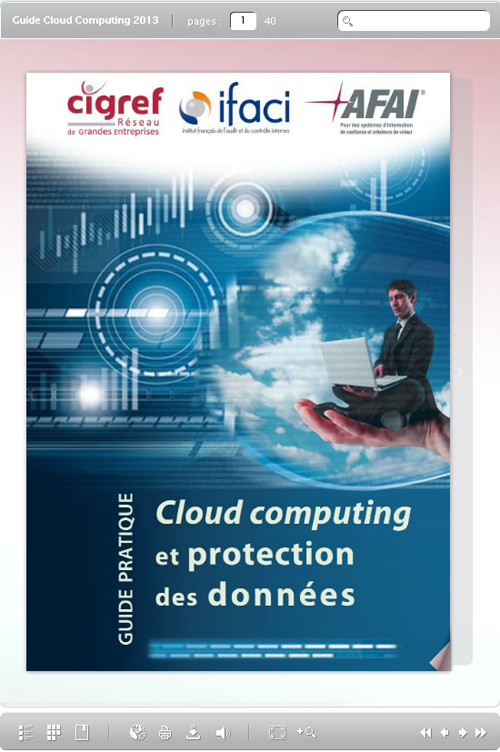Table of Contents
ToggleThe Impact of Cloud Computing on Our Daily Lives
Cloud Computing transforms the way we access digital resources, making services more flexible and accessible. In our daily lives, this technology enables simplified use of digital tools, whether it’s for data storage, remote work, or accessing online applications.
One of the main advantages of the Cloud is the capability of online storage. Users can save and share their files without the need for physical devices, thereby facilitating collaboration and reducing the risk of data loss.
Cloud Computing also paves the way for dematerialized applications and services, such as:
- Software as a Service (SaaS): Access to applications via the internet without local installation, such as project management or CRM tools.
- Infrastructure as a Service (IaaS): The ability to rent computing capacity without an upfront investment in physical servers.
- Platform as a Service (PaaS): Development of applications without worrying about the underlying infrastructure.
The flexibility offered by the Cloud also allows resources to be adapted on demand. For example, companies can easily adjust their processing capacity without incurring permanent fixed costs. This promotes agility and responsiveness in the face of market changes.
In terms of security, Cloud providers implement robust measures to protect data. While some may fear data breaches, the level of protection is often superior to what most organizations can offer internally. This includes encryption, continuous monitoring, and advanced backup systems.
However, the transition to the Cloud is not without challenges. It is crucial to conduct a risk analysis before adopting a cloud solution to ensure it meets the security and regulatory needs of the organization. Resistance to change from employees may also require awareness and training efforts.
With the rise of Cloud Computing, the introduction of new technologies, such as artificial intelligence and predictive analytics, becomes more affordable. Companies can leverage these tools to optimize asset management and better anticipate market trends.
In summary, Cloud Computing redefines our access to digital resources, promoting flexibility, collaboration, and security. The changes it brings to our daily and professional lives are inevitable and promise unprecedented digital evolution.
Increased Data Accessibility
Cloud Computing revolutionizes our access to data and digital services in daily life. Thanks to this technology, it is now possible to access information and applications from anywhere and at any time, as long as an internet connection is available.
One of the major transformations brought by the Cloud is the increased accessibility of data. Users no longer need to locate their files on a specific device. Instead, the data is stored on remote servers, accessible via the Cloud. This allows:
- To view files on different devices, whether it’s a computer, tablet, or smartphone.
- To easily share documents and resources with other users, without geographical constraints.
- To collaborate in real-time on projects, enhancing teamwork and increasing productivity.
- To benefit from automatic updates, ensuring that we always work with the latest version of the files.
Moreover, the Cloud also offers unprecedented flexibility. Users no longer need to worry about the storage space on their devices, as they can easily expand their storage capacity on demand. Cloud platforms also allow rapid adaptation to changing business needs, providing tailored solutions.
Finally, the rise of Cloud Computing transforms access to applications. Many software programs that required complex installations on computers are now accessible directly via a web browser. This greatly simplifies the process of using digital tools and allows companies to reduce costs related to IT infrastructure.
Facilitated Collaboration Among Users
Cloud Computing revolutionizes our access to digital resources, and its impact on our daily lives is undeniable. Beyond simple data backup, this technology offers innovative solutions to facilitate our professional and personal lives.
One of the major transformations brought by Cloud Computing is undoubtedly the facilitated collaboration among users. Thanks to cloud-based tools, it is now possible to work together in real-time, regardless of where team members are located.
The main characteristics of collaboration in the cloud include:
- Remote Access: Users can access files and applications from any device connected to the Internet.
- Simplified Sharing: Documents can be easily shared, allowing multiple users to edit them simultaneously.
- Real-time Exchange: Conversations and project updates can happen instantly thanks to integrated messaging tools.
- Version Management: Cloud platforms offer a history of modifications, allowing tracking of changes and restoring previous versions if necessary.
This increased accessibility not only improves team productivity but also enhances their agility. Companies can respond more quickly to market changes and optimize their processes, while minimizing infrastructure costs.
With Cloud Computing, the way we interact, collaborate, and create is undergoing a transformation. This technology not only improves efficiency but redefines the norms of modern work.









